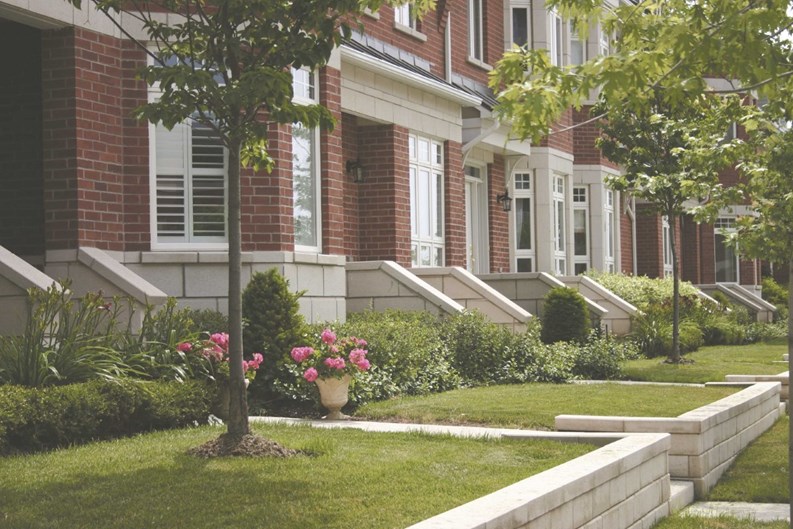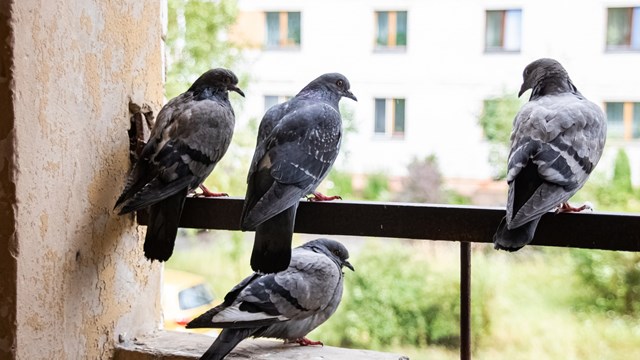Snowfall can be beautiful in New Jersey, but a long, harsh winter can wreak havoc on a condominium community’s landscaping. As spring begins to peek around winter’s chilly corner, the snow melts away and uncovers the winter wear. From broken tree branches littering the ground and long-buried trash that has blown onto the property to shrubs crushed by the weight of ice and snow, the list of potential seasonal damage seems endless.
Understandably, spring planning can be a bit overwhelming, especially at this time when condominium boards are trying to penny-pinch in light of the struggling economy. But there’s no denying that it’s time to clean up. But before you begin, you’ll need to chart a course of action.
A Plan of Attack
When it comes to spring landscaping, board members and contractors cannot go in with a blind eye. The planning for spring projects generally starts early—often as soon as a full calendar year in advance.
The first step is evaluating. To be safe, board members should conduct walk-throughs of the property at least once a month. That way, when it comes time to move ahead with winter cleanup and think spring, there won’t be any major surprises. It could also be to a board’s advantage to open up these walk-throughs to anyone living in the community. Often, the more that residents understand about their community, the more positive their experience living will be. Regular contact also opens lines of communication and invites positive feedback.
Before diving into major changes, general maintenance needs to be performed. After surveying the grounds, property owners will have a better idea of what the biggest obstacles are standing between winter cleanup and spring landscaping. Tackling the obvious—the matted, wet leaves leftover from last fall and potholes in the driveways and parking lots—brings an immediate visual improvement.
The next step is figuring who will be taking on the job. Boards are constantly bidding year-round. However, it’s important to bid early enough so project contractors have enough time to put the plan into motion. Whether it’s ordering flowers and mulch, or knowing how many workers to hire for the season ahead, there many reasons why waiting too long can lead a board into trouble.
If a community is pleased with the work of a specific company from years past, the board is in luck. However, it’s still smart to put out the word that a condominium complex is up for bid every few years. This enables boards to ensure they’re getting a good price for the work and labor, and can keep everyone on their toes.
“When you go out to bid, I recommend that boards get three proposals,” says Michael Kukol, chairman of the New Jersey Landscapers Association and president of Horizon Landscape in Wyckoff. “It’s hard to say if a small company is going to give more personalized service than a big company. There are pluses and minuses with each. They need to be realistic about what the property needs are. It would be wise to invest in getting a real set of specifications for their property.”
It’s also crucial to make sure that the project goes to a company that the association board knows will do a good job. Before choosing a landscaper, Kukol suggests reviewing the success of prior years. To do this, boards will need notes and records of their previous interactions as well as surveys of the property—yet another reason why regular walk-throughs are beneficial in the long run.
“After you’ve narrowed it down to a few companies, you should meet the owners of the companies and see who you’re comfortable with so you’ll find someone who is a good fit, personally and professionally,” says Jody Shilan, owner of Jody Shilan Designs in Wyckoff. “It’s also a good idea to talk to facility managers the same way an individual homeowner would check with their neighbors.”
Committees Play a Role
Many communities also prepare for the spring by forming landscaping committees. These committees, which generally meet anywhere from bi-monthly to bi-weekly, are a way for residents to get involved and have a say in the aesthetics of their community. Whether coming up with a list of ideas—like what types of shrubbery the residents would like or the color perennials desired for the beds—or actually physically getting their hands dirty, the role committees play as well as their degree of involvement differs from site to site.
“[Working on a committee] is something they look forward to, and it gets people involved,” says Tony Rosado, president of Rosado & Sons Inc. in Westborough, Massachusetts. “When you get more people involved in the community, the community feels better, looks better, and that’s what takes some communities a little above and beyond.”
When working with committees, Shilan says that it is essential for everyone to cooperate and work together. “It’s important that the associations have people representing them, so in that regard a landscaping committee is a good thing,” says Shilan. “Contractors need to give committees their ideas, get feedback, and vice versa. Everyone should work together to achieve the best outcome—not work against each other to get the cheapest price for the greatest amount of work.”
Rosado agrees that it can be to a community’s advantage to work hand-in-hand with the landscaper for a better outcome. “They have ideas and we have ideas,” says Rosado. “Ideally, they like our input, and we like to hear theirs. It goes back to being a partner and building a partnership and relationship. They may not be able to get some of the better prices that we can get as a company, so we may go out and purchase things for them, and they can install it. We just want to see a positive outcome for all involved.”
“If you get a group of three to five people together [on a landscaping committee] who have some knowledge and consensus about what they want to do, then it’s like board approval—and that can be very helpful,” says Kukol. “It can also make people feel more involved about where they live and they can even take pride in it.”
Money Matters
With the current state of the economy, everyone’s being a bit more money-conscious these days. Whereas communities may have had a few extra thousand dollars to spend on aesthetics before, that’s not necessarily the case now.
“Everyone is cutting back right now,” says Kukol. “But there’s only so long you can cut back. There are only so many years you cannot paint your house before it falls into disrepair. It's the same thing with landscaping. But there are ways to save money. One way is to request to have all your beds mulched one-and-a-half inches deep and get a flat price on it.”
While landscape contractors want to appease the client by offering low-price packages and service, it’s rough when the price of materials is constantly on the rise. The costs of fertilization, gas and oil, and mulch, for instance, are not something the professionals have control over. Everyone is doing their best to try and accommodate the difficult times. Unfortunately, in some cases, companies fall victim to economic realities.
“I have heard some selling off equipment and downsizing, or closing their doors outright, but it isn’t as many as you may think,” says Kukol. “On the other hand, there are many people getting into the business now too.”
No matter how you slice it, though, aesthetics really are important. While boards may think they’ve done the right thing by cutting back costs one year, Shilan warns that getting the property back up to par later may cost twice as much as the savings gained. The solution? Make small sacrifices that aren’t as noticeable to the average eye. Boards must remember that the way a property looks has a lot to do with the happiness of the current residents, as well as potential future owners.
“Proper planting is an unnoticeable way to save money in the long term,” says Shilan. “When you first do plantings you should make sure you are using the right plant for the right space. The lighting or water conditions or the height of the plant has to be the right fit.”
“Options are good for communities that are feeling the crunch right now,” says Rosado. “When it comes to mulching, for example, you can give boards different options. You can mulch the common areas, or you can skip those and just go around the foundations of the building.”
To be cost effective, it’s also important for boards to assure they’re dealing with a landscaping company that fully understands the different elements of the property they’re working with. Because of this, rather than bringing on a new team on a yearly basis, sticking with one company for a longer period of time may be to a board’s advantage. That’s why Rosado suggests three-year contracts.
“Some properties—you go there and look at it and everything looks good,” says Rosado. “[But] you don’t know what the company before you did to [for example] prevent those weeds or any of the other issues in general. In all fairness to any landscaper, it takes a good year to know the property. In one season of landscaping, you really get to know the property and you take a lot of notes. Then, you get to figure out all the goods and all the bads because every property is different. By year two and three you really have a grasp on what you’re working with.”
Another benefit to three-year contracts is that companies may be willing to cut you some slack when it comes to negotiating. If boards commit to stick with the same landscaper for a longer period of time, that gives them leeway to bargain for services. That bargaining is not something that landscaping companies are a stranger to. In fact, because of tight funds, it’s become a standard practice.
“We understand where they’re coming from and we’re with them on it,” says Rosado. “The hope is that through helping the client and providing good service, down the road when they’re back on their feet we can all get back to where we were before.”
Emily Abbate is a freelance writer and a frequent contributor to The New Jersey Cooperator. Editorial Assistant Christy Smith-Sloman contributed to this article.







Leave a Comment